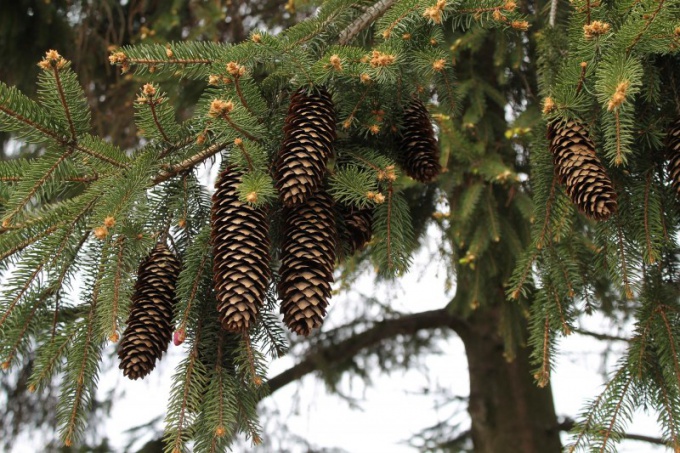Cedar, pine, fir – trees, by definition, belong to the Pine family. However, despite the similarity of appearance, these plants have some significant differences.
Cedars has grown in the subtropical climate zone of the Mediterranean, the mountainous Crimea and the Himalayas. In accordance with the name of the area where the tree grows, it can be divided into types: Lebanese, Himalayan and so on. Pine has spread in the temperate subtropical climate of Eurasia and North America. Scholars have identified about 200 species of pine trees. Spruce and pine – evergreen trees. The conditions of life are creating different forms of plants from shrub to tree with large canopy.
Monoecious plant cedar reaches 50 m in height, evergreen, it has an impressive spreading crown. Spirally arranged needles collected in bundles. Each hoinka resembles a needle, is a triangular emerald steel color.
Also pine is a monoecious plant having short or long needles. The beam consists of two to five needles. If the tree is damaged, it begins to form the rosette, they grow into short needles. Their color depends on the climate, soil composition and varies from light silvery to deep green.
Cones of the cedar are single, candles are bochenkova form. Pinecone ripens on the second or third year of formation. Pine cones are oblong, hanging from the branches. Spruce also has needle-like but short pine. This tree's roots don't go deep, and are located on the superficial layers of spruce requires fertile and moist soil.
The distinction between spruce and pine is that pine is light-demanding and shade-tolerant spruce. Pollination the first and the second occurs with the wind. Pine is widely used in agriculture, its wood is a valuable material for joinery and construction, it is used as fuel. This tree is a raw material for the production of tar, pitch and turpentine.
Number of varieties of pine and spruce in ten times exceeded the number of types of cedar. The natural habitat of pine much wider than the cedar. Morphological characteristics and variability in the size of pine is also much more diverse. Cedar beam comprises a large number of needle needles. Pine is less capricious in the selection of the soil, its long powerful roots go deep into the ground, and hence, the tree can live on moisture and nutrients that are located in the deep layers of the earth.
The locus
Cedars has grown in the subtropical climate zone of the Mediterranean, the mountainous Crimea and the Himalayas. In accordance with the name of the area where the tree grows, it can be divided into types: Lebanese, Himalayan and so on. Pine has spread in the temperate subtropical climate of Eurasia and North America. Scholars have identified about 200 species of pine trees. Spruce and pine – evergreen trees. The conditions of life are creating different forms of plants from shrub to tree with large canopy.
Characteristics
Monoecious plant cedar reaches 50 m in height, evergreen, it has an impressive spreading crown. Spirally arranged needles collected in bundles. Each hoinka resembles a needle, is a triangular emerald steel color.
Also pine is a monoecious plant having short or long needles. The beam consists of two to five needles. If the tree is damaged, it begins to form the rosette, they grow into short needles. Their color depends on the climate, soil composition and varies from light silvery to deep green.
Cones of the cedar are single, candles are bochenkova form. Pinecone ripens on the second or third year of formation. Pine cones are oblong, hanging from the branches. Spruce also has needle-like but short pine. This tree's roots don't go deep, and are located on the superficial layers of spruce requires fertile and moist soil.
The distinction between spruce and pine is that pine is light-demanding and shade-tolerant spruce. Pollination the first and the second occurs with the wind. Pine is widely used in agriculture, its wood is a valuable material for joinery and construction, it is used as fuel. This tree is a raw material for the production of tar, pitch and turpentine.
General conclusions about the differences
Number of varieties of pine and spruce in ten times exceeded the number of types of cedar. The natural habitat of pine much wider than the cedar. Morphological characteristics and variability in the size of pine is also much more diverse. Cedar beam comprises a large number of needle needles. Pine is less capricious in the selection of the soil, its long powerful roots go deep into the ground, and hence, the tree can live on moisture and nutrients that are located in the deep layers of the earth.
